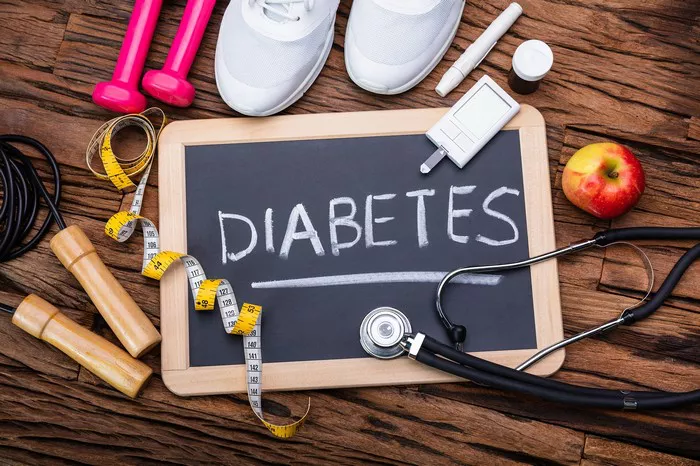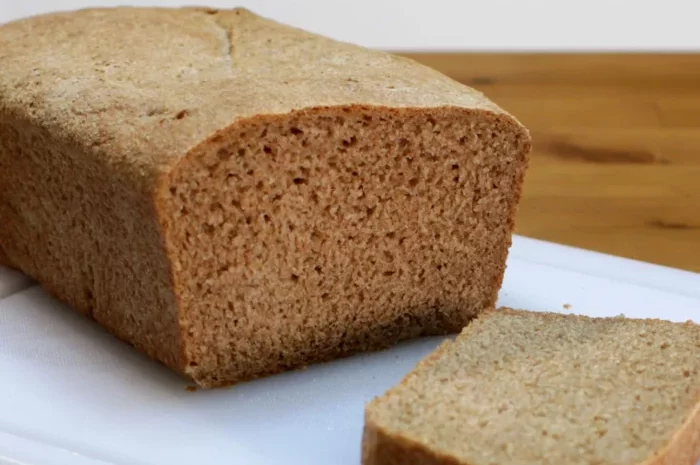Diabetes, a chronic condition characterized by elevated blood sugar levels, requires diligent management to prevent complications and maintain optimal health. Diet plays a pivotal role in managing blood sugar levels. This article will explore evidence-based dietary strategies to help individuals with diabetes or prediabetes lower their blood sugar levels.
Understanding Blood Sugar and Diabetes
Blood sugar, or blood glucose, is the primary source of energy for the body’s cells. It comes from the food we eat, primarily carbohydrates. Insulin, a hormone produced by the pancreas, helps cells absorb glucose from the bloodstream. In diabetes, either the body does not produce enough insulin (Type 1 diabetes) or the cells become resistant to insulin (Type 2 diabetes), leading to elevated blood sugar levels.
Managing blood sugar involves a multifaceted approach, including medication, physical activity, and, importantly, diet. Certain foods can help stabilize blood sugar levels, while others can cause spikes. Understanding how different foods affect blood sugar is crucial for making informed dietary choices.
Carbohydrates: Quality Over Quantity
Types of Carbohydrates
Carbohydrates are classified into three main types: sugars, starches, and fiber. Sugars and starches can quickly raise blood sugar levels, while fiber has a minimal impact.
- Sugars: These are simple carbohydrates found in fruits, vegetables, milk, and added sugars in processed foods.
- Starches: Complex carbohydrates found in foods such as bread, rice, and pasta.
- Fiber: Found in plant-based foods like vegetables, fruits, legumes, and whole grains. Unlike sugars and starches, fiber is not digested by the body and helps regulate blood sugar.
Choosing the Right Carbohydrates
To lower blood sugar, focus on consuming high-fiber, low-glycemic index (GI) carbohydrates. The glycemic index measures how quickly a food raises blood sugar levels. Low-GI foods cause a slower, more gradual rise in blood sugar.
Low-Glycemic Index Foods
- Non-starchy Vegetables: Broccoli, spinach, kale, cauliflower, and bell peppers.
- Legumes: Lentils, chickpeas, and beans.
- Whole Grains: Oats, quinoa, barley, and whole wheat.
- Fruits: Berries, apples, pears, and oranges.
- Nuts and Seeds: Almonds, walnuts, chia seeds, and flaxseeds.
These foods are high in fiber, which slows the absorption of sugar into the bloodstream, helping to prevent blood sugar spikes.
Protein: A Stabilizing Force
Protein is an essential macronutrient that helps build and repair tissues, and it plays a crucial role in blood sugar management. Including protein in meals can slow the absorption of carbohydrates, preventing rapid blood sugar spikes.
High-Quality Protein Sources
- Lean Meats: Chicken, turkey, and lean cuts of beef and pork.
- Fish and Seafood: Salmon, mackerel, sardines, and shrimp.
- Plant-Based Proteins: Tofu, tempeh, edamame, and legumes.
- Dairy: Low-fat yogurt, cheese, and milk.
Incorporating these protein sources into your meals can provide a steady release of energy and help maintain stable blood sugar levels.
Healthy Fats: Supporting Blood Sugar Control
Healthy fats are crucial for overall health and can improve insulin sensitivity, helping to control blood sugar levels. Unlike carbohydrates, fats do not raise blood sugar levels. Including healthy fats in your diet can also help you feel full and satisfied, reducing the likelihood of overeating.
Sources of Healthy Fats
- Monounsaturated Fats: Olive oil, avocados, and nuts.
- Polyunsaturated Fats: Fatty fish, flaxseeds, chia seeds, and walnuts.
- Omega-3 Fatty Acids: Salmon, mackerel, sardines, and flaxseeds.
Avoiding Unhealthy Fats
While healthy fats are beneficial, it’s important to avoid unhealthy fats, which can contribute to insulin resistance and inflammation.
- Trans Fats: Found in many processed and fried foods. Avoid hydrogenated oils and partially hydrogenated oils.
- Saturated Fats: Found in red meat, full-fat dairy products, and many processed foods. Limit intake and opt for leaner options.
The Role of Fiber in Blood Sugar Management
Fiber is a type of carbohydrate that the body cannot digest. It slows the absorption of sugar and can help improve blood sugar levels. There are two types of fiber: soluble and insoluble.
Soluble Fiber
Soluble fiber dissolves in water to form a gel-like substance, which can help lower blood sugar levels and improve insulin sensitivity. Good sources of soluble fiber include:
- Oats
- Barley
- Legumes
- Fruits: Apples, pears, and citrus fruits.
- Vegetables: Carrots, peas, and broccoli.
Insoluble Fiber
Insoluble fiber does not dissolve in water and helps with digestion by adding bulk to stool. While it does not directly affect blood sugar, it supports overall digestive health. Good sources include:
- Whole Grains: Whole wheat, brown rice, and quinoa.
- Nuts and Seeds: Almonds, sunflower seeds, and flaxseeds.
- Vegetables: Broccoli, spinach, and cauliflower.
Timing and Portion Control
In addition to choosing the right types of foods, timing and portion control are essential for managing blood sugar levels.
Regular Meals and Snacks
Eating regular meals and snacks helps maintain consistent blood sugar levels throughout the day. Skipping meals can lead to blood sugar spikes and dips, making management more challenging.
- Breakfast: Include a balanced meal with protein, healthy fats, and low-GI carbohydrates.
- Lunch and Dinner: Focus on balanced meals with a mix of vegetables, lean protein, and whole grains.
- Snacks: Opt for healthy snacks such as nuts, seeds, or a piece of fruit with nut butter.
Portion Control
Large portions, even of healthy foods, can lead to elevated blood sugar levels. Use portion control to manage your intake and prevent overeating.
- Vegetables: Aim for half your plate to be non-starchy vegetables.
- Protein: One-quarter of your plate should be lean protein.
- Carbohydrates: One-quarter of your plate should be whole grains or starchy vegetables.
Specific Foods and Nutrients with Blood Sugar Benefits
Certain foods and nutrients have been shown to have specific benefits for blood sugar control.
Cinnamon
Cinnamon has been studied for its potential to lower blood sugar levels. Some studies suggest that it can improve insulin sensitivity and lower fasting blood sugar levels.
Vinegar
Vinegar, particularly apple cider vinegar, may help lower blood sugar levels by slowing the digestion of carbohydrates and improving insulin sensitivity. Adding vinegar to salads or using it in cooking can provide these benefits.
Chromium
Chromium is a trace mineral that plays a role in carbohydrate and fat metabolism. Some research suggests that chromium supplements can improve blood sugar control in people with diabetes.
Magnesium
Magnesium is involved in insulin secretion and function. Adequate magnesium intake is associated with a lower risk of Type 2 diabetes. Foods rich in magnesium include leafy green vegetables, nuts, seeds, and whole grains.
Probiotics
Probiotics, found in fermented foods like yogurt, kefir, sauerkraut, and kimchi, can improve gut health and may have a positive impact on blood sugar levels. A healthy gut microbiome is linked to better insulin sensitivity and glucose metabolism.
Meal Planning for Blood Sugar Control
Creating a meal plan tailored to your preferences and nutritional needs can help you manage your blood sugar effectively. Here is a sample meal plan to get you started.
Sample Meal Plan
Breakfast
- Option 1: Greek yogurt with berries, chia seeds, and a sprinkle of cinnamon.
- Option 2: Oatmeal made with almond milk, topped with sliced apple, walnuts, and a drizzle of honey.
Lunch
- Option 1: Grilled chicken salad with mixed greens, avocado, cherry tomatoes, and a vinaigrette dressing.
- Option 2: Quinoa bowl with black beans, roasted vegetables, and a dollop of Greek yogurt.
Dinner
- Option 1: Baked salmon with steamed broccoli and a side of quinoa.
- Option 2: Stir-fried tofu with mixed vegetables, served over brown rice.
Snacks
- Option 1: A handful of almonds and a piece of fruit.
- Option 2: Carrot sticks with hummus.
Conclusion
Managing blood sugar through diet is a powerful tool for individuals with diabetes or prediabetes. By choosing the right types of carbohydrates, incorporating protein and healthy fats, increasing fiber intake, and paying attention to timing and portion sizes, you can effectively lower your blood sugar levels. Additionally, incorporating specific foods and nutrients known to support blood sugar control can further enhance your dietary approach.
Remember, it is important to work with a healthcare provider or a registered dietitian to create a personalized meal plan that meets your specific needs and health goals. With the right dietary strategies, you can take control of your blood sugar and improve your overall health and well-being.
Related topics:
What to Eat When Your Blood Sugar Drops?

























